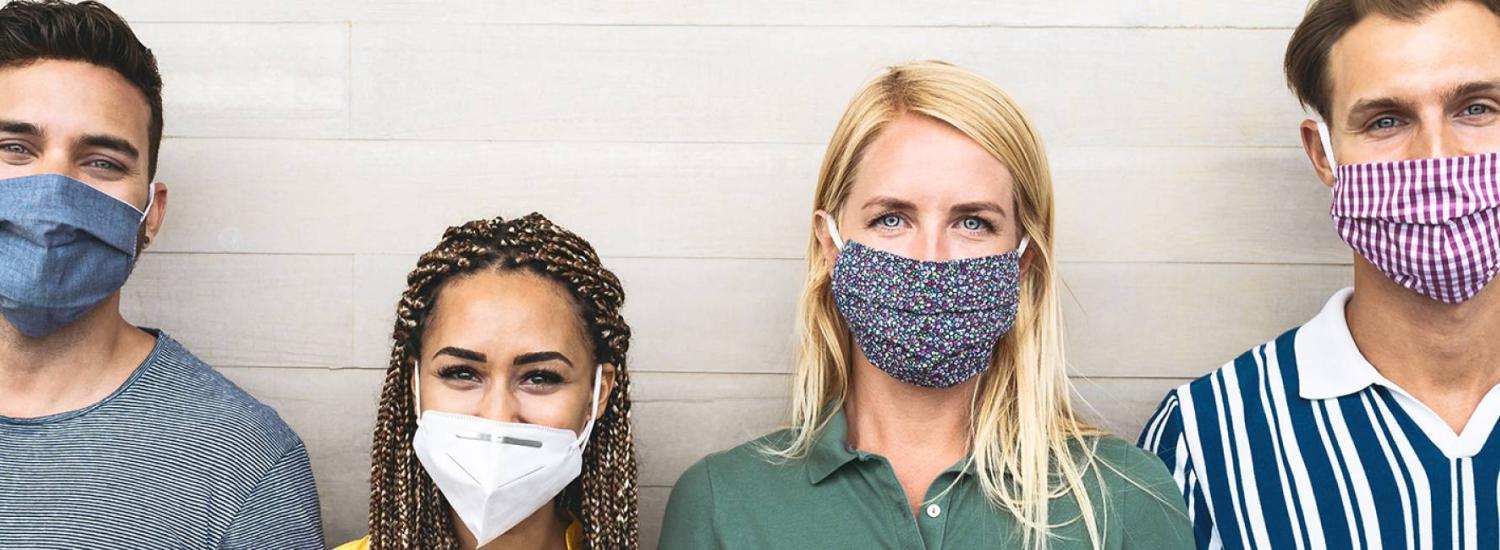COVID-19 Airborne Transmission Tool Available
New model estimates COVID-19 transmission in classrooms, buses, protests, more

Many of us face a constant barrage of decisions during this global pandemic: How dangerous is it to ride the bus? To teach and/or attend class? What’s my risk in a public demonstration?
University of Colorado Boulder atmospheric chemist Jose-Luis Jimenez has released a pilot tool that may help us answer some of these questions, or at least provide some informed guidance.
The COVID Airborne Transmission Estimator is now publicly available online, said Jimenez, who is a CIRES Fellow and professor of chemistry at CU Boulder. It will be updated as more and more is understood about COVID-19 airborne transmission, and the tool is still somewhat tricky for a non-expert to use. But since Jimenez released the estimator Tuesday, he has been “bombarded with messages from people who want to use it or are already using it,” including people from other universities around the world.
The Estimator calculates COVID-19 infection risk for a number of basic situations: college classrooms, choirs, taking a bus, being outdoors, participating in demonstrations. The model is downloadable and free, and users can tweak inputs to ask, for example, what’s my risk if other students wear or don’t wear masks? And can my choir sing together more safely by moving outdoors?
Jimenez is an expert in the chemistry and dynamics of particles in the air. He normally focuses on pollution particles, but for the last several months, he and many colleagues around the world have been focused on COVID-19 virus-containing particles, which spread through the air. He drew on those colleagues to informally review his Estimator, which is based on published methods and data.
Though based on sound peer-reviewed science, the model itself has limited accuracy because it relies on numbers that are still uncertain: numbers that describe, for example, how many infectious viruses are emitted by an infected person, or just how efficiently homemade cloth masks prevent the virus from spreading from a wearer. On average, that’s probably 50 percent (cloth masks prevent half of all exhaled viruses from entering the air), but some masks fit poorly and others may fit better.
“So we trust the order of magnitude of the results and especially the relative strengths of different actions such as increasing ventilation or wearing masks, but not the precise infection probabilities,” Jimenez said. “Different actions have very different costs, so the hope is that the tool can help allocate limited resources to reduce the risk of infection most effectively.”
For example, his base tool allows a user to ask about risk to a student if, say, a professor is infectious but still teaching, perhaps because she’s asymptomatic. The model estimates a 4% risk of infection in this situation, assuming 50 minutes inside a classroom under the socially-distanced conditions planned for Fall 2020 at CU Boulder (65 square feet per person). And it predicts risk to a professor and other students if one student in the room is infected: 0.5%. The difference is very real: A professor is generally speaking out loudly and nearly continuously, and loud speech emits more particles than simply sitting and breathing. But the precise numbers of 4% and 0.5% should be considered rough estimates that capture the general magnitude of risk.
“The tool is helpful to run “what if” calculations, it’s a practical initial guide,” said Greg Blonder, an engineering professor at Boston University. “It’s too early to rely on for campus decision making, but it’s helpful to identify the most critical factors.”
Neal Langerman, a chemical safety consultant in California, called the new Estimator "a semi-quantitative understanding of risk of illness from various behaviors.
"And it’s much better than anything else we have out there," Langerman said.
Details:
- To view the new Estimator, including a very important “ReadMe” tab with descriptions and caveats: Link.
- The model assumes that people practice physical distancing of 6 feet, so that droplet transmission does not play a role. If this is not the case, there would be additional risk besides that estimated with the tool
- To experiment with the impacts of changing parameters, download it first (File Menu → Download as Excel) and read “Readme” first
- To practice: The Classroom tab describes two scenarios: infected instructor and infected student. To investigate the impact of requiring faculty to use N95 masks, you would change the “Mask efficiency for emission” from 50% (for fabric masks) to 90% (closer to average efficiency for N95s, as described in "Readme," with references to published studies)
- The “Readme” has other critical information, including uncertainties in the model
- The Estimator was made possible with help from colleagues at CU Boulder; Virginia Tech; University of Cassino in Italy; University of Tallinn in Estonia; CSIC, a research institute in Spain; and Queensland University of Technology in Australia